177–187 Walton Road, Liverpool, Merseyside, L4 4AJ
Thomas Frost, the draper, moved into one of the six shops on this site in the 1880s. By 1910, his drapery business had expanded into all of the shops. It was probably around the time of World War I that the old shops were replaced by the present building which had been Frost’s Department Store, now this Wetherspoon pub.
Prints and text about The Thomas Frost.
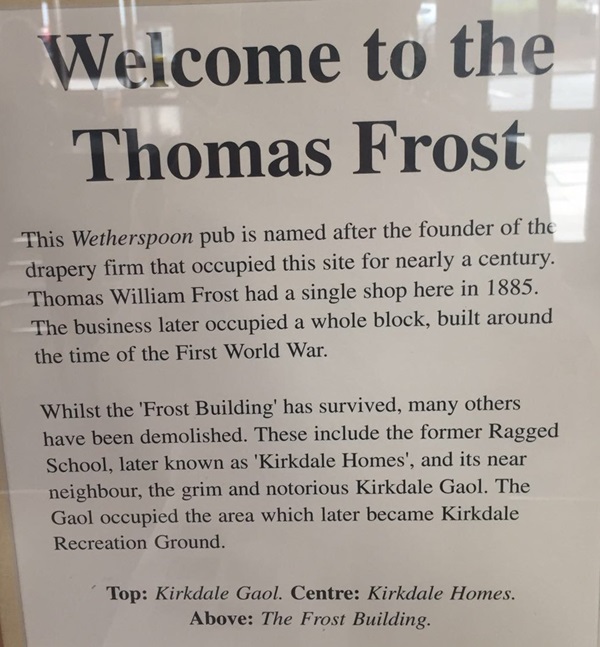

The text reads: This Wetherspoon pub is named after the founder of the drapery firm that occupied this site for nearly a century. Thomas William Frost had a single shop here in 1885. The business later occupied a whole block, built around the time of the First World War.
Whilst the Frost Building has survived, many others have been demolished. These include the former Ragged School, later known as Kirkdale Homes, and its near neighbour, the grim and notorious Kirkdale Gaol. The Gaol occupied the area which later became Kirkdale Recreation Ground.
Top: Kirkdale Gaol
Centre: Kirkdale Homes
Above: The Frost Building.
Prints and text about entertainment in Liverpool.
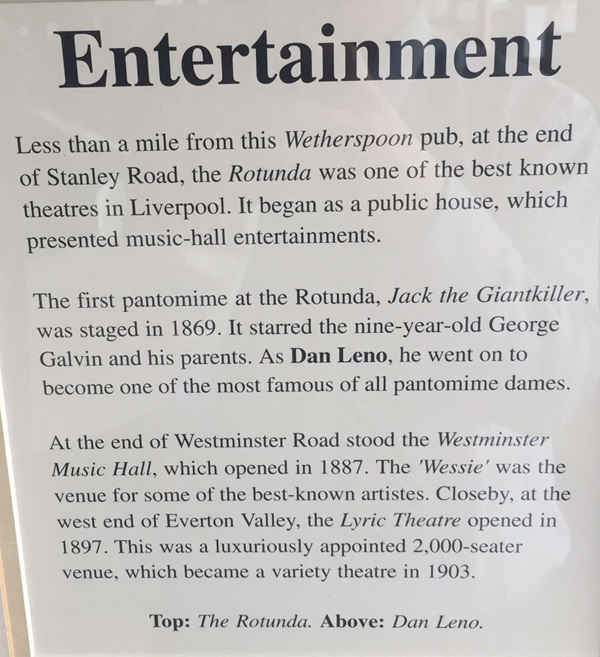
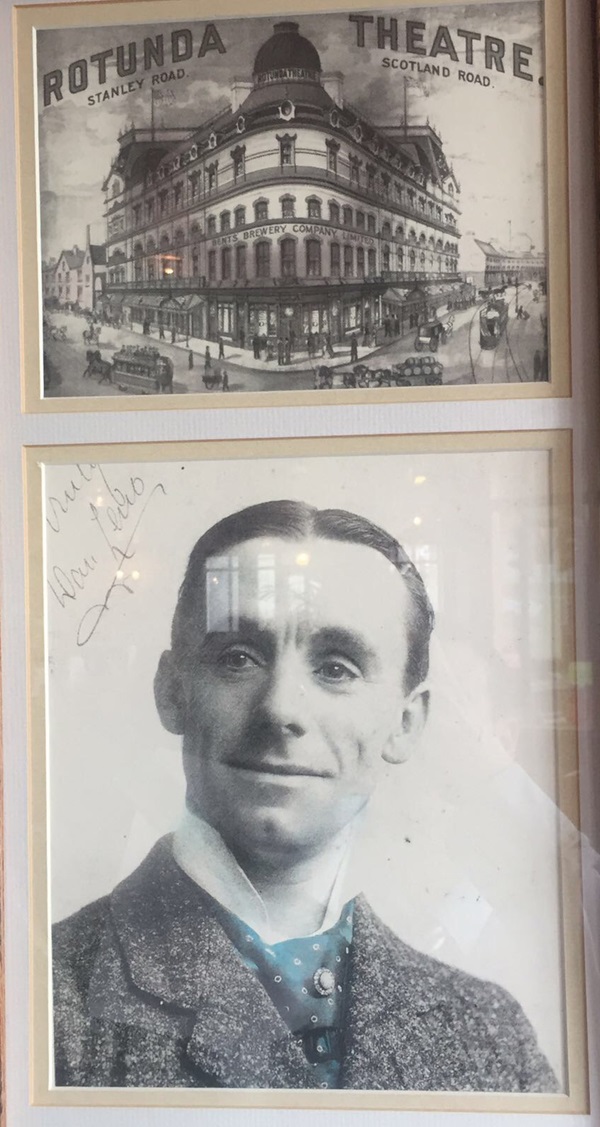
The text reads: Less than a mile from this Wetherspoon pub, at the end of Stanley Road, the Rotunda was one of the best known theatres in Liverpool. It began as a public house, which presented music-hall entertainments.
The first pantomime at the Rotunda, Jack the Giantkiller, was staged in 1869. It starred the nine-year-old George Galvin and his parents. As Dan Leno, he went on to become one of the most famous of all pantomime dames.
At the end of Westminster Road stood the Westminster Music Hall, which opened in 1887. The Wessie was the venue for some of the best-known artistes. Closeby, at the west end of Everton Valley, the Lyric Theatre opened in 1897. This was a luxuriously appointed 2,000-seater venue, which became a variety theatre in 1903.
Top: The Rotunda
Above: Dan Leno
Prints and text about Liverpool’s Landing Stage.
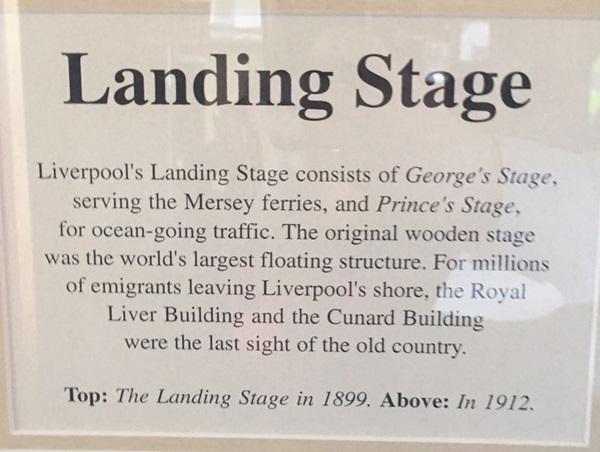

The text reads: Liverpool’s Landing Stage consists of George’s Stage, serving the Mersey Ferries, and Prince’s Stage, for ocean-going traffic. The original wooden stage was the world’s largest floating structure. For millions of emigrants leaving Liverpool’s shore, the Royal Liver Building and the Cunard Building were the last sight of the old country.
Top: The Landing Stage in 1899
Above: In 1912.
A print and text about the Mersey Tunnel.
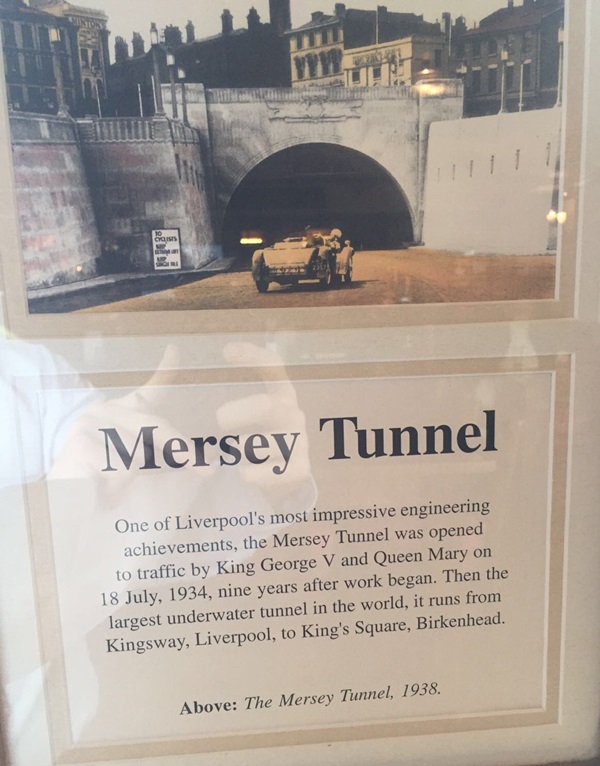
The text reads: One of Liverpool’s most impressive engineering achievements, the Mersey Tunnel was opened to traffic by King George V and Queen Mary on 18 July, 1934, nine years after work began. Then the largest underwater tunnel in the world, it runs from Kingsway, Liverpool, to King’s Square, Birkenhead.
Top: The opening ceremony, 1934
Above: The Mersey Tunnel, 1938.
Prints and text about the Town Hall.


The text reads: Designed by John Wood, the Town Hall was built between 1749 and 1754. Later extended, it is the city’s oldest public building, and was first used for both commercial and civic business. On top of the dome is the Roman Goddess Minerva. Rather confusingly, her shield incorporates the Union Jack.
Top: The Town Hall from Castle Street, 1906
Above: The Town Hall in 1912.
Text Everton and Anfield.
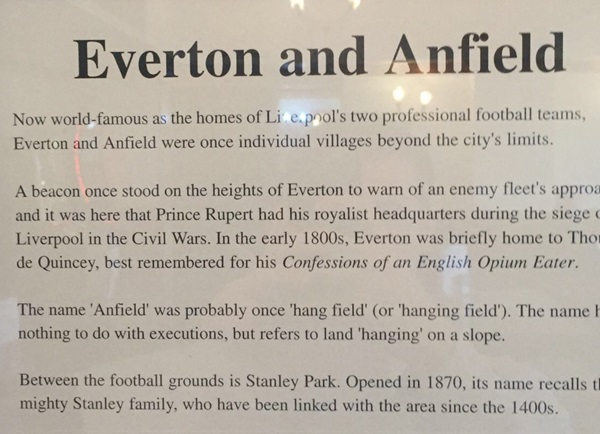
The text reads: Now world-famous as the homes of Liverpool’s two professional football teams, Everton and Anfield were once individual villages beyond the city’s limits.
A beacon once stood on the heights of Everton to warn of an enemy fleet’s approach and it was here that Prince Rupert had his royalist headquarters during the siege of Liverpool in the Civil Wars. In the early 1800s, Everton was briefly home to Thomas de Quincey, best remembered for his Confessions of an English Opium Eater.
The name Anfield was probably once ‘hang field’ (or hanging field). The name has nothing to do with executions, but refers to land hanging on a slope.
Between the football grounds is Stanley Park. Opened in 1870, its name recalls the mighty Stanley family, who have been linked with the area since the 1400s.
A print and text about St George’s Hall.

The text reads: One of the world’s greatest neo-classical buildings, St Georges Hall was said by Queen Victoria to be “worthy of ancient Athens”. Opened in 1854, it combined court rooms and concert halls. It was designed by Harvey Lonsdale Elmes, but completed after his death by his friend and mentor Professor CR Cockerell.
An oil painting entitled Urban Skyline, by Nick Sykes.
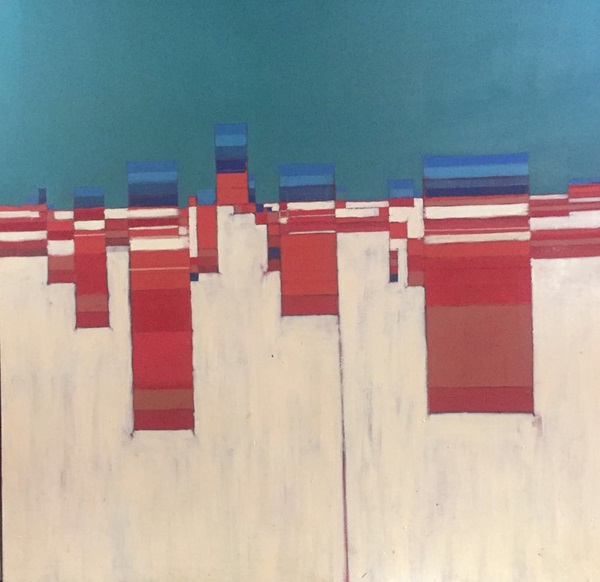
External photograph of the building – main entrance.
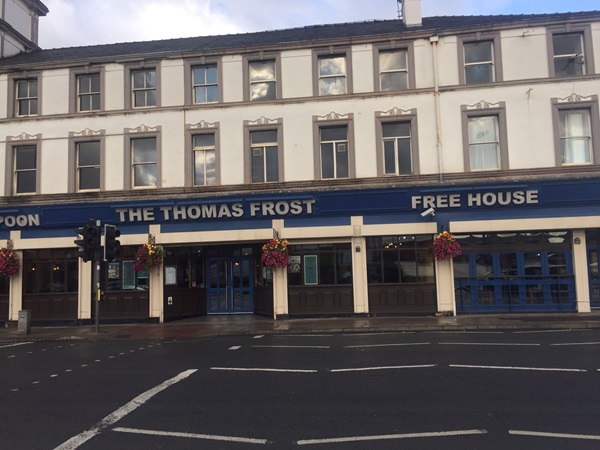
If you have information on the history of this pub, then we’d like you to share it with us. Please e-mail all information to: pubhistories@jdwetherspoon.co.uk